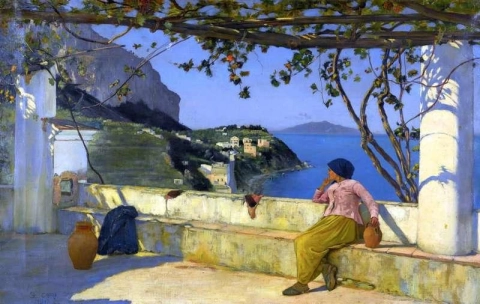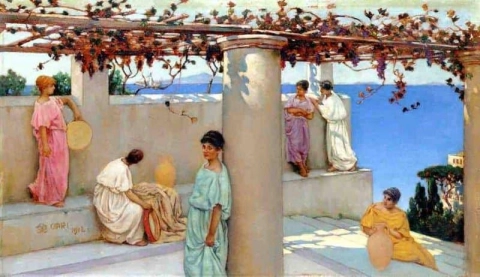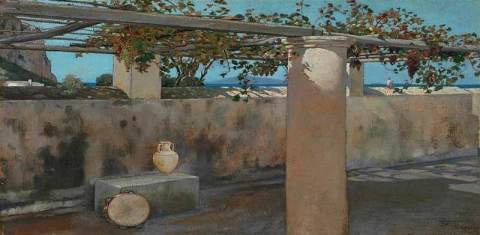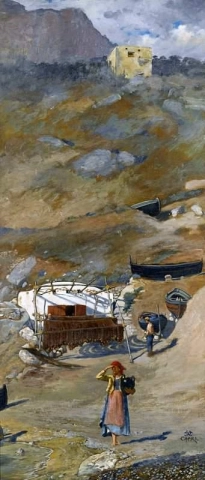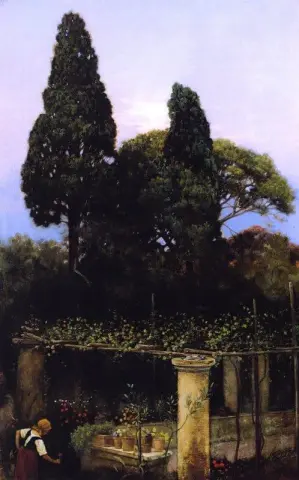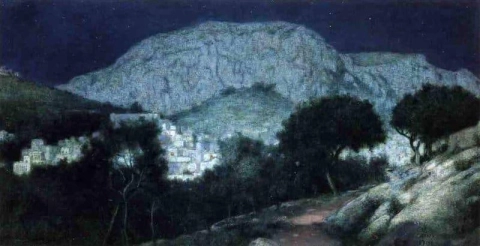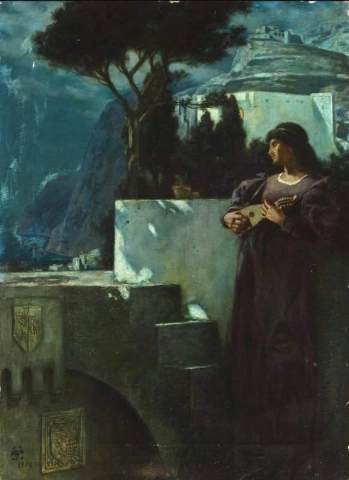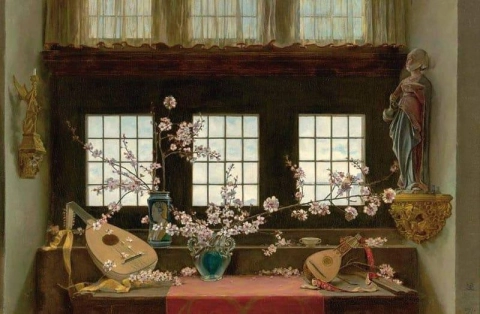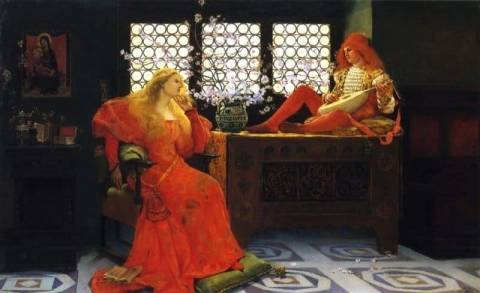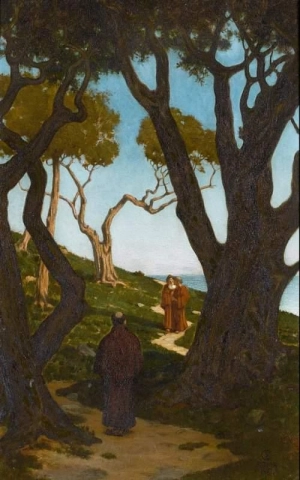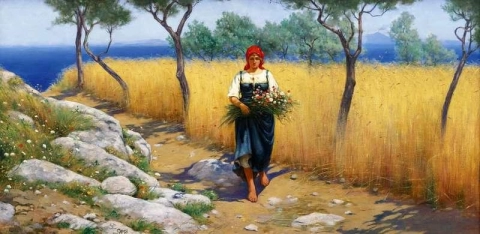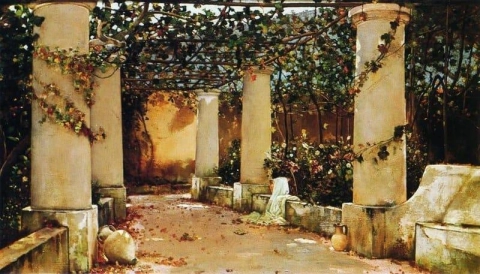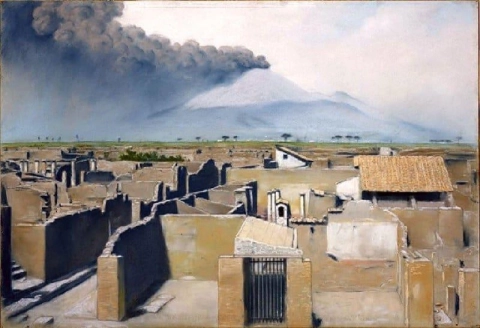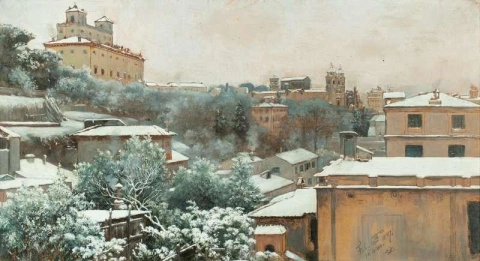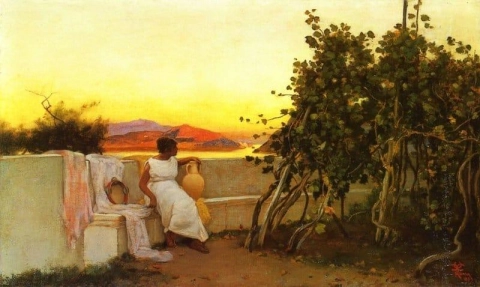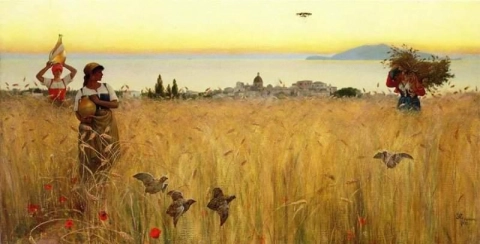

Hand painted reproductions of Charles Caryl Coleman
Charles Caryl Coleman: An Influential American Artist of the 19th Century
Charles Caryl Coleman (1840–1928) was an American artist known for his exceptional skill in capturing the complexities of light, shadow, and color in both portrait and landscape painting. He was a prominent figure in the American art scene of the 19th century, with a particular focus on portraiture, genre scenes, and landscapes. His works reflect both his academic training and his exposure to the vibrant European art movements of his time, blending realism with subtle Romantic influences.
Early Life and Education
Charles Caryl Coleman was born on 2 January 1840 in Barnstable, Massachusetts. His early life in New England exposed him to the natural beauty of the American landscape, which would later influence his landscape paintings. He showed an early aptitude for art, prompting him to pursue formal education in the field.
At the age of 18, Coleman moved to New York City to study at the prestigious National Academy of Design. He later traveled to Europe, where he continued his studies in the art centers of Paris and Rome. It was in these European cities that Coleman encountered the artistic currents that would shape his career. He was particularly influenced by the works of the French Barbizon School and the emerging Impressionist movement, which emphasized the use of light and atmosphere to capture fleeting moments in nature.
Artistic Style and Development
Coleman’s artistic style evolved over the course of his career. His early works, influenced by the academic tradition, were characterized by realistic depictions of the human figure and scenes from daily life. However, as he spent more time in Europe, particularly in France and Italy, his work began to incorporate elements of Impressionism and the Romantic approach to landscape painting.
A key feature of Coleman’s work was his ability to capture light and color with a remarkable sense of immediacy. He employed a loose brushwork technique that allowed him to convey the nuances of natural light, whether depicting the serene glow of a sunset or the deep shadows of an interior space. His landscapes, often set in rural or Mediterranean environments, conveyed the beauty of nature with an attention to detail and a refined understanding of color.
Though Coleman was largely known for his landscape painting, he also painted portraits and genre scenes. His portraits, like his landscapes, displayed a sensitivity to the mood and character of his subjects. Coleman’s portraits of prominent figures from the American and European elite were highly regarded, and he established himself as a skilled portrait artist in addition to his landscape work.
Notable Works and Themes
Throughout his career, Charles Caryl Coleman produced a wide range of works, from portraits and genre scenes to landscapes and still lifes. His landscapes are perhaps his most celebrated contributions to American art, with many of his works capturing the beauty of the European countryside, particularly in Italy and France.
One of Coleman’s notable works is The Venetian Lagoon (1875), a painting that exemplifies his mastery of light and atmospheric effects. The painting depicts a serene Venetian landscape, with the shimmering waters of the lagoon reflecting the soft colors of the sky. Coleman’s use of light in this piece is particularly striking, as he captures the ethereal quality of the environment in a way that was characteristic of the emerging Impressionist movement.
Another important painting by Coleman is The Shepherdess (1870), which exemplifies his skill in portraiture. The painting features a young woman tending her flock in a pastoral setting, with the soft light of the countryside bathing her in a warm glow. The work captures the peaceful simplicity of rural life, while also conveying the personality and character of the subject.
Coleman’s A Mediterranean Garden (1890) is another notable work that demonstrates his ability to capture the beauty of nature. The painting depicts a lush, sun-drenched garden with vibrant colors and delicate light. Coleman’s use of color in this piece is rich and full of life, reflecting his deep appreciation for the natural world.
Legacy and Influence
Charles Caryl Coleman’s work had a lasting impact on both American and European art. Although his paintings were often associated with the aesthetic preferences of the 19th century, particularly the Realist and Romantic movements, his ability to capture light and atmosphere paved the way for the later development of Impressionism in the United States.
Coleman’s influence extended beyond his own generation. His landscape paintings, in particular, would inspire future American artists who sought to convey the beauty of the natural world through a more intuitive and atmospheric approach. His portraits, too, helped shape the development of American portraiture, as they demonstrated an ability to capture the psychological depth of his sitters while maintaining a strong sense of realism.
Coleman’s work was exhibited widely in the United States and Europe, earning him recognition among collectors and critics. His paintings were featured in major exhibitions, including the National Academy of Design and the Paris Salon, and his works were acquired by important art institutions, ensuring his place in the history of American and European art.
Where to Find Reproductions of Charles Caryl Coleman’s Art
Charles Caryl Coleman’s works continue to captivate art lovers for their sensitivity to light, color, and the human experience. His landscapes and portraits, which embody both the realism of the 19th century and the early influences of Impressionism, remain highly sought after. For those interested in collecting or enjoying his art, reproductions of his work are available through various galleries and online platforms. Whether you are drawn to his stunning landscapes or his engaging portraits, Coleman’s legacy continues to resonate in the world of fine art.
Imagine owning an original-style painting by one of the greatest artists in history. At POD, we offer you the chance to make this dream a reality. Each canvas is faithfully reproduced down to the smallest detail, allowing you to experience the beauty of the artist’s vision in your own home.
Our reproductions are crafted by experienced painters using the finest materials and time-honored methods. We are committed to delivering works of exceptional quality that will inspire and bring joy to your family for generations to come.




